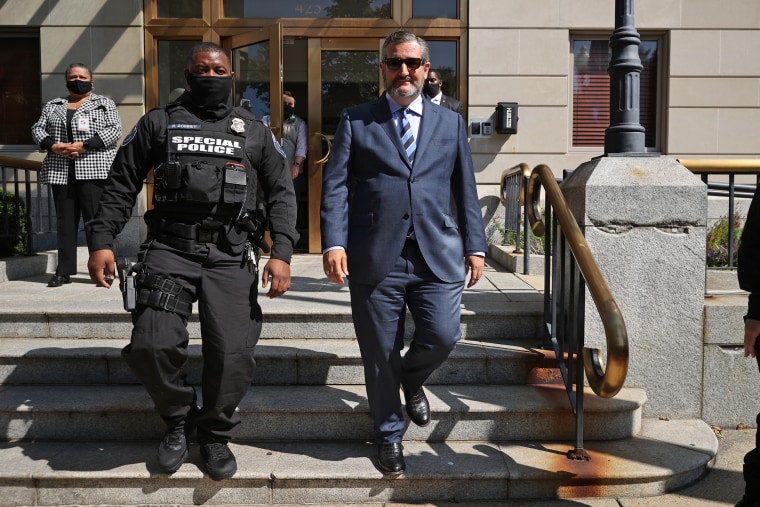Candidates for the House and Senate spent $7.5 million from their campaign coffers on physical and digital security in the 2022 election cycle, up from $1.3 million in the 2020 election cycle, according to an analysis of FEC reports from both cycles.
The bulk of this money over the last two years was spent on security services at campaign events and residential security for candidates. Some of the money was spent on other types of security, like web and digital security for campaign emails and websites.
In the 2022 cycle, the candidates whose campaigns spent the most on security were Georgia Sen. Raphael Warnock, Texas Sen. Ted Cruz, Missouri Rep. Cori Bush, Georgia Sen. Jon Ossoff and Arizona Sen. Mark Kelly.
The only candidate who spent over $1 million was Warnock, who spent over $1.4 million on security in 2021 and 2022. That's less than one percent of his total campaign spending through 2022.
The next top spender, Cruz, spent $661,000 on security services in 2021 and 2022.
The FEC authorizes incumbent candidates for House and Senate to spend campaign funds on security, including security guards, digital security and residential or home security systems.
Across all campaigns, the most common description given for spending on security was "security services." Other than that, campaigns also commonly listed, "event security," "residential security expenses," and "security detail agent and vehicle services," as common disbursements.
There could be a variety of reasons that security spending was up in the 2022 cycle over 2020. First, in many places, the 2020 campaign cycle featured fewer in-person events and smaller crowds due to the Covid-19 pandemic. This would decrease the need for security throughout the campaign.
Second, the Jan. 6, 2021 attack at the Capitol led many elected representatives to fear for their personal safety and security, which could lead to a higher demand for security at home and on the campaign trail.
According to new threat assessment statistics released earlier this month by the U.S. Capitol Police, this increased fear is warranted. Police investigated 7,501 threats to lawmakers in 2022, down from 9,625 in 2021 and 8,613 in 2020, but up from 6,955 in 2019 and 5,206 in 2018.

